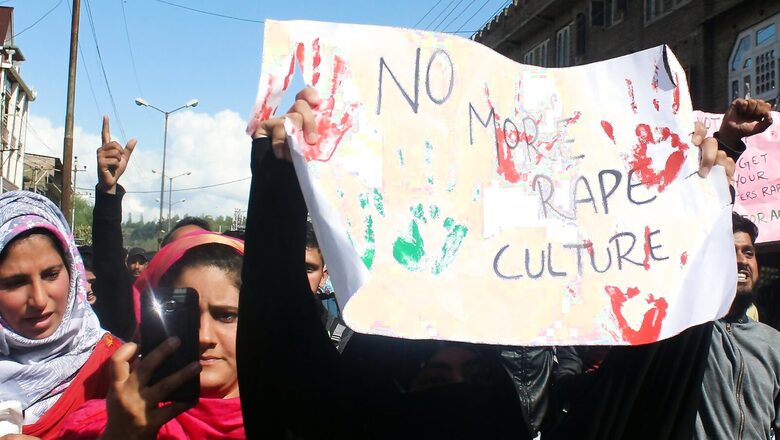
views
Recently, PM Narendra Modi exhorted the importance of having a flexible, work-from-home ecosystem that would immensely boost women’s participation in India’s labor force. Indeed, for an emerging behemoth, India’s women’s labor participation rate ranks among the lowest.
As per data from World Bank, more women have been disappearing from India’s workforce in the last decade. From 23.4% in 2010 to 20.3% in 2021, women, who make up nearly 50% of India’s population, have been consistently dwindling in the workforce. At just 24%, the engagement of urban Indian women in the economy pales woefully compared to the 90% participation urban men exhibit.
While there are many, many reasons women are still on the periphery of the Indian workforce, one of them is the increasing crimes against women. This, is despite recent data from the National Crime Records Bureau (NCRB), reporting a steady decline in India’s total crime rate, which fell by 7.6% to 61 lakhs last year.
However, in the meantime, crimes against women rose 15.3% last year. Around 4,28,278 cases were registered in 2021, as compared to 3,71,503 in 2020. This means that the crime rate per lakh women’s population jumped to 64.5 in 2021, steeply rising from 56.5 in 2020. And the majority of cases i.e. around 31.8% of these cases stemmed from spousal cruelty and domestic violence. West Bengal leads this list, followed by UP, Rajasthan, and Assam. This is a clear physical and mental discouragement for women who want to work, but are subjected to violence at home.
The condition is worse in metro areas, which are supposedly safer, connected, and secure. As per data from SBIs recent Eco-wrap, crime against women rose by 22.9% in metro cities, with Delhi making up for 1/3rd of this. The job hubs of India, namely Bangalore, Mumbai, and Delhi make up for a massive 52% of all crimes happening in metro cities.
Says Nimisha (name changed), a Delhi-based professional, “After marriage, when I moved to Delhi, I was barred from working, thanks to the late, erratic hours I had to put in. Traveling in Delhi is generally unsafe, but the situation is exacerbated at night. Despite company transportation, serious safety issues persist. It was mentally taxing to travel back home at night in public transport.”
Studies indicate a generally lower crime rate to be directly proportional to higher female workforce participation, and investment growth. According to the SBI report, low crime incidence have led to higher GSDP growth in 9 out of 21 Indian states. Himachal Pradesh, Chhattisgarh, Tamil Nadu, Jharkhand, Karnataka, Gujarat, and Uttarakhand are examples of states which have high participation corresponding to lower crime rates. Rajasthan, Telangana, and Odisha are the only states that present high female workforce participation in conjugation with a high crime rate.
But such aberrations aside, urban India and much down the line, rural India, are eons far from giving its women their much-deserved work flexibility and safety they need to kickstart work.
Read all the Latest News India and Breaking News here














Comments
0 comment